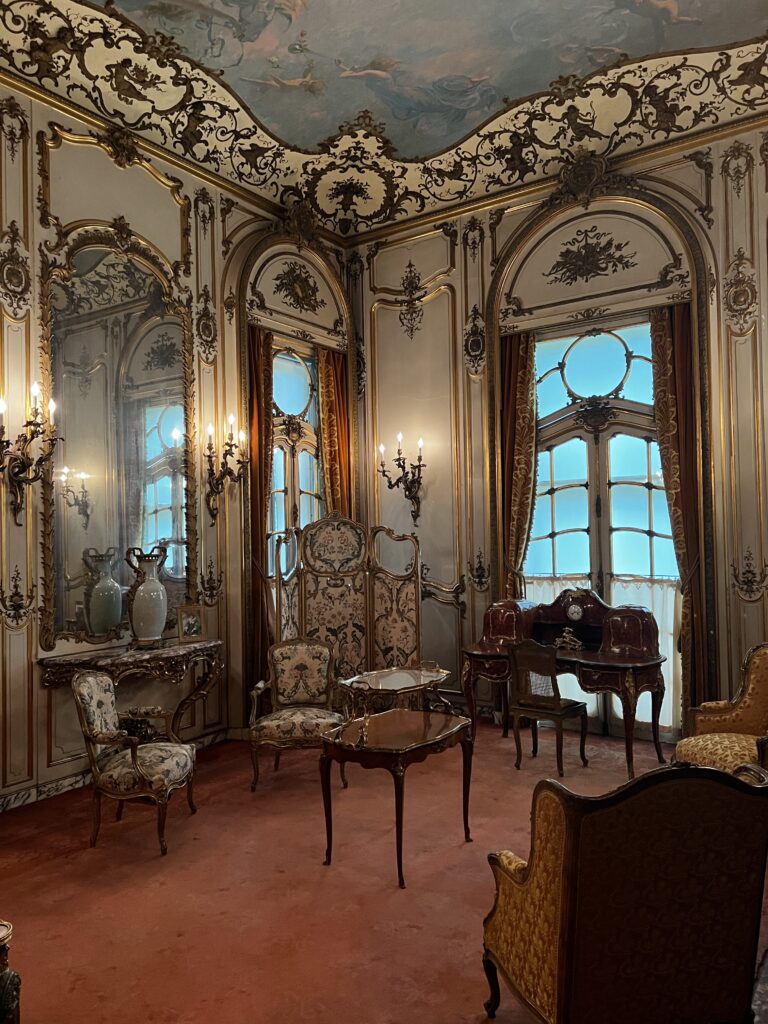- 36.3 miles
- 4 hours 56 minutes
- 7.6 mph average speed
- 3-7 mph winds
We enjoyed our final views of New York City as we started up the Hudson River. Our trip was only about 36 miles but we were going against the current so we went slower rather than burning up precious fuel. It was a great day for cruising and, after we got out of the New York City area, we practically had the river to ourselves. The scenery quickly changed from skyscrapers to tree covered mountains.

The George Washington Bridge is the world’s busiest vehicle bridge and connects Manhattan with New Jersey. The bridge is 4,760 feet long and has two decks with 8 lanes on the upper deck and 6 lanes on the bottom deck. Just under the bridge on the Manhattan side is The Little Red Lighthouse which was built in 1880 and is one of the few surviving lighthouses in New York City. Hildegarde Swift wrote a children’s book in 1942, The Little Red Lighthouse and the Great Gray Bridge, which teaches children that no matter how small they are, they can still make a difference.
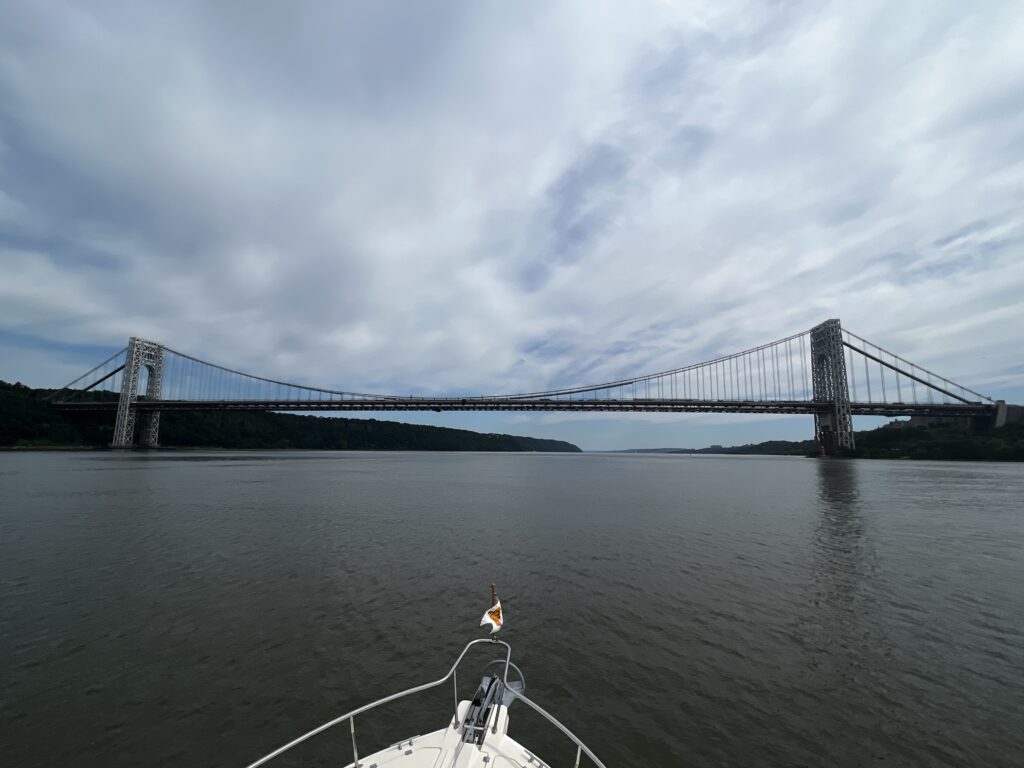


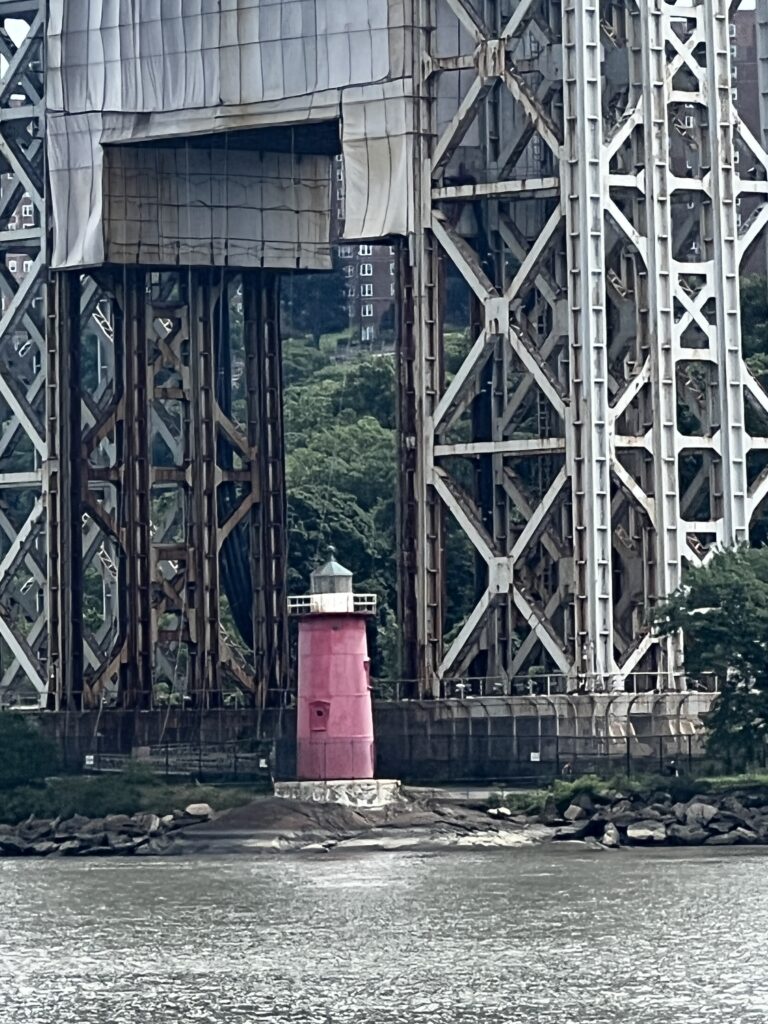


Once docked at the marina, we stayed on the boat and waited for mechanics to come look at one of our air-conditioning units which had not worked for about two weeks. Thankfully, the one that cools the stateroom works great and it hasn’t been too terribly hot in the salon with the windows open. The mechanics were able to come back the next day and repair the unit without having to replace the fan. In the meantime, the mechanics and Kevin decided we should have the boat hauled out to repack the stuffing boxes on the prop shafts which we will do in a few days.
We later walked to the Croton Colonial Diner for dinner.
The next day we shared an Uber with new friends, Karen and Tony from Long Recess, and visited the beautiful Croton Dam which supplies water to New York City. Construction of the dam began in 1892 and was completed in 1906. This dam is actually the New Croton Dam which replaced the Old Croton Dam which was completed in 1842.



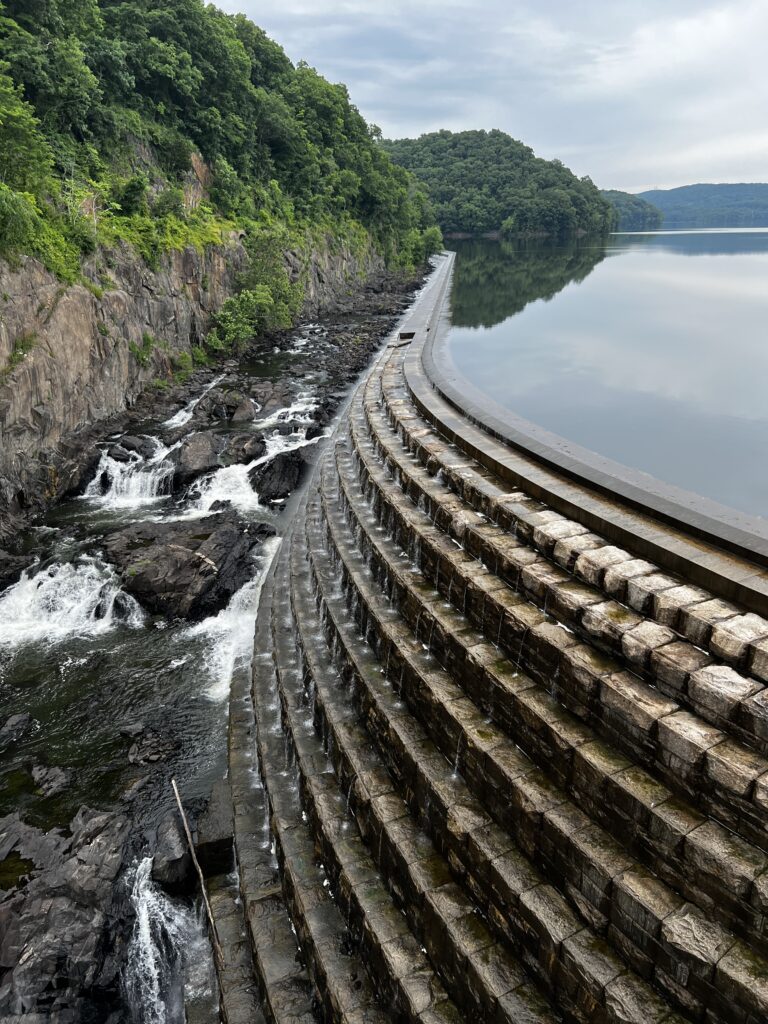
We hiked up to the top of the dam and back down.

After our visit to the dam, we shared a rental car with Karen and Tony to run errands. We hit the T-Mobile store, CVS, and laundromat before having dinner at Los Abuelos Mexican restaurant followed by ice cream at The Blue Pig.



We went grocery shopping the next morning followed by a tour of West Point Military Academy and dinner at the Culinary Institute of America in Poughkeepsie, NY in one of three restaurants there, American Bounty, which features products of the Hudson Valley.
West Point was founded in 1802 and is built on the grounds of where Fort Clinton was constructed in 1778. The fort’s name was later changed to Fort Arnold, after Benedict Arnold, but changed back to Fort Clinton after he committed treason and defected to the British Army. Upon graduation from West Point, cadets serve 5 years of active duty as an Officer in the Army followed by three years in the Army Reserves.
The organ in the Chapel is the largest pipe organ in a religious institution in the world. It contains 23,511 pipes.

The Protestant Chapel at West Point







The Culinary Institute of America’s prime campus is in Hyde Park, NY and is quite spectacular. Within the campus, there are four restaurants that are open to the public where the students prepare the food and serve the customers, The Apple Pie Bakery, American Bounty, The Bocuse Restaurant (French) and The Ristorante Caterina de’ Medici (Italian).

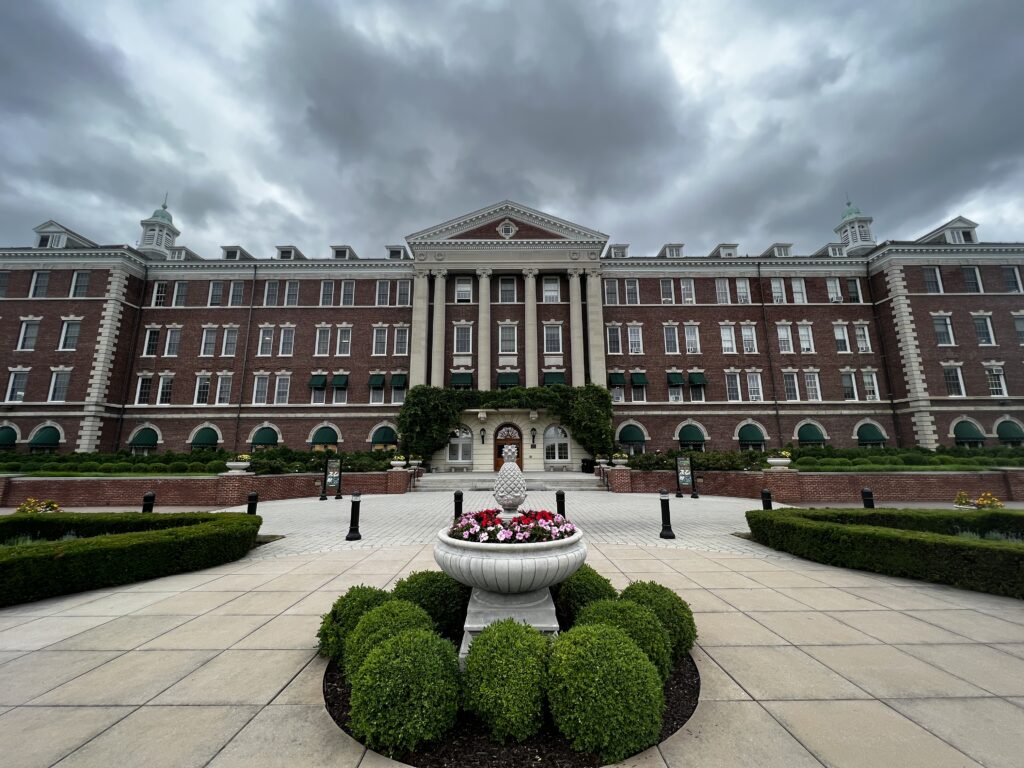

We chose to dine at the American Bounty as it features products of the Hudson Valley. We had a wonderful meal and received excellent service while being able to watch the student chefs prepare the food.
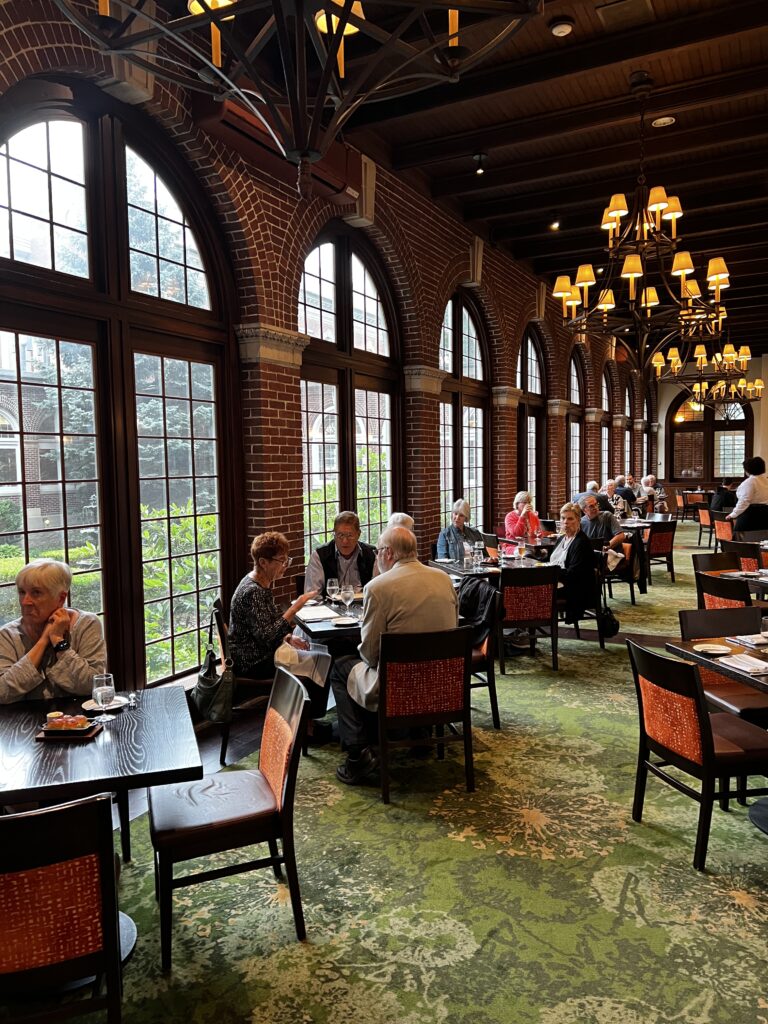

On our final full day in Croton-on-Hudson, we drove back to Hyde Park and toured Springwood, the home of Franklin D. Roosevelt, as well as Hyde Park, one of about 40 Vanderbilt mansions. Both homes are part of the National Park Service.
Roosevelt was born and raised in this beautiful home on the banks of the Hudson River and later lived here with his wife Eleanor where they raised their family. He visited the home over 200 times during his presidency and hosted many foreign dignitaries there, including King George VI and Queen Elizabeth (the current Queen’s parents), who were the first British monarchs on American soil, and Winston Churchill. He and his wife, Eleanor, are buried on the property in his mother’s rose garden. The home already had a trunk lift to raise luggage to the second floor and, once Roosevelt became paralyzed from polio, he used this lift to get himself to the second floor where his bedroom was located as the lift was large enough to accommodate his wheelchair. The lift could have been electrified but Roosevelt was deathly afraid of fire and preferred to raise himself up using ropes contained in the lift. Roosevelt was an avid stamp collector from his childhood through his adulthood and amassed a collection of about 1.2 million stamps in his lifetime.




About 2 miles down the road from Springwood is the Vanderbilt Mansion known as Hyde Park. This was the spring and fall country home of Frederick and Louise Vanderbilt. Frederick Vanderbilt was the grandson of Cornelius Vanderbilt, America’s first multi-millionaire, who built the Vanderbilt fortune from a $100 loan from his mother to start a ferry operation between Staten Island and Manhattan. The mansion was built over two years by 300 European craftsmen and was completed in 1898. With 57 rooms covering 50,000 square feet, it is the smallest of all of the Vanderbilt mansions, most notably the Biltmore Estate in Asheville, NC. As Frederick and Louis had no children, the mansion was left to his niece upon their deaths. She did not need the mansion as she had one of own and put the entire estate up for sale for $350K and reduced the price to $250K a year later. As she was still not able to sell the estate due to the Great Depression, Roosevelt approached her and asked if she would be willing to donate it to the National Park Service as he planned to do with his home. She agreed and this is the only Gilded Age mansion in the National Park Service. Frederick and Louise were well known for their tremendous generosity. The would allow the school children to play on their grounds, they paid their servants much higher wages than anyone else in the area, they bought Christmas presents for the children in the town and, when Frederick died, there were 57 people named in his will, 37 of which were his servants.

